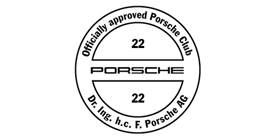PSH
PCGB Member
Hi guys
I'm always reading up on these great cars, in particular the '86' for obvious reasons and now and then find something that i wasn't aware off before. Today i came across a few bits of info while searching for something else.
First up was endurance tests, I was aware of the 944s test in '88' when they covered the distance to the moon and found that the engine was as good as new when stripped down and measured. i wasn't aware of an 'around the world' endurance test using an '86' turbo.. to quote:
On January 29, 1986, a 944 Turbo with catalytic converter started to an around the world record attempt from Porsche Cars North America Headquarters in Reno, Nevada, USA. The car was European version, with German number plates BB-PW167 (BB number plates on a Porsche tell it's very likely a test car). The car was driven by Austrian professional long distance test driver Gerhard Plattner. This stock 944 Turbo covered 5 continents without any technical problems; the car was driven through the coldness of Canada (-18° F/-28° C) and the heat of Australia (+41° C/+106° F). The car arrived to its starting point in Reno after 31 days and 25.570 miles/41.140 km, averaging 825 miles/1327 km a day despite the off-days when the car was on the cargo planes. This was the fastest trip around the world in automotive history - and with a car with catalytic converter using unleaded fuel.
end quote:
I wonder if this record is still held by this car?
Next up was 'high speed' tests, again with an '86' quote:
The 944 Turbo was used for other endurance tests aswell including 50.000 miles/80.000 km on German Autobahns in 4 months and 16 hours with average speed of 150 mph/240 km/h on Nardo test track (remember, car's official top speed was 152 mph/245 km/h).
end quote:
Now that's impressive, the car must have been WOT the entire time (ok...on straight autobahns and test track)to achieve an average of 150mph, I tip my hat to that and just proves what most of us already knew, these engines are bullet proof if treated right.
Lastly and this really surprised me... did you know that the 951 was intended to have a PDK transmission? quote:
It was planned to launch the 944 Turbo also with a double-clutch PDK (Porsche DoppelKupplung) gearbox, but despite long development it wasn't reliable enough to put it into series production. It was as early as 1964, when Porsche had worked on a power shift dual clutch gearbox. Starting in 1979, various versions of dual-clutch gearboxes were designed. On this basis, the PDK was created in 1981. It was tested until 1986 in Porsche street cars in parallel to the Group C Porsche racing car, as a semi and fully automatic version. Gear shifting without interruption in propulsive power proved particularly interesting for the turbocharged engines, as the turbo boost would not drop during the gear change.
end quote:
The last words in particular beg a question...quote: Gear shifting without interruption in propulsive power proved particularly interesting for the turbocharged engines, as the turbo boost would not drop during the gear change. end quote:
Just how fast was this car through the gears? I bet it was light years ahead of the 911 turbo which it was proved to be faster than anyway...... now I wonder if the specs for these PDK's fitted to the 951 still exist? I'd be very interested to discover just how fast these cars were... very interested....
just a little light reading guys, hope you enjoyed it...
Pete
I'm always reading up on these great cars, in particular the '86' for obvious reasons and now and then find something that i wasn't aware off before. Today i came across a few bits of info while searching for something else.
First up was endurance tests, I was aware of the 944s test in '88' when they covered the distance to the moon and found that the engine was as good as new when stripped down and measured. i wasn't aware of an 'around the world' endurance test using an '86' turbo.. to quote:
On January 29, 1986, a 944 Turbo with catalytic converter started to an around the world record attempt from Porsche Cars North America Headquarters in Reno, Nevada, USA. The car was European version, with German number plates BB-PW167 (BB number plates on a Porsche tell it's very likely a test car). The car was driven by Austrian professional long distance test driver Gerhard Plattner. This stock 944 Turbo covered 5 continents without any technical problems; the car was driven through the coldness of Canada (-18° F/-28° C) and the heat of Australia (+41° C/+106° F). The car arrived to its starting point in Reno after 31 days and 25.570 miles/41.140 km, averaging 825 miles/1327 km a day despite the off-days when the car was on the cargo planes. This was the fastest trip around the world in automotive history - and with a car with catalytic converter using unleaded fuel.
end quote:
I wonder if this record is still held by this car?
Next up was 'high speed' tests, again with an '86' quote:
The 944 Turbo was used for other endurance tests aswell including 50.000 miles/80.000 km on German Autobahns in 4 months and 16 hours with average speed of 150 mph/240 km/h on Nardo test track (remember, car's official top speed was 152 mph/245 km/h).
end quote:
Now that's impressive, the car must have been WOT the entire time (ok...on straight autobahns and test track)to achieve an average of 150mph, I tip my hat to that and just proves what most of us already knew, these engines are bullet proof if treated right.
Lastly and this really surprised me... did you know that the 951 was intended to have a PDK transmission? quote:
It was planned to launch the 944 Turbo also with a double-clutch PDK (Porsche DoppelKupplung) gearbox, but despite long development it wasn't reliable enough to put it into series production. It was as early as 1964, when Porsche had worked on a power shift dual clutch gearbox. Starting in 1979, various versions of dual-clutch gearboxes were designed. On this basis, the PDK was created in 1981. It was tested until 1986 in Porsche street cars in parallel to the Group C Porsche racing car, as a semi and fully automatic version. Gear shifting without interruption in propulsive power proved particularly interesting for the turbocharged engines, as the turbo boost would not drop during the gear change.
end quote:
The last words in particular beg a question...quote: Gear shifting without interruption in propulsive power proved particularly interesting for the turbocharged engines, as the turbo boost would not drop during the gear change. end quote:
Just how fast was this car through the gears? I bet it was light years ahead of the 911 turbo which it was proved to be faster than anyway...... now I wonder if the specs for these PDK's fitted to the 951 still exist? I'd be very interested to discover just how fast these cars were... very interested....
just a little light reading guys, hope you enjoyed it...
Pete









